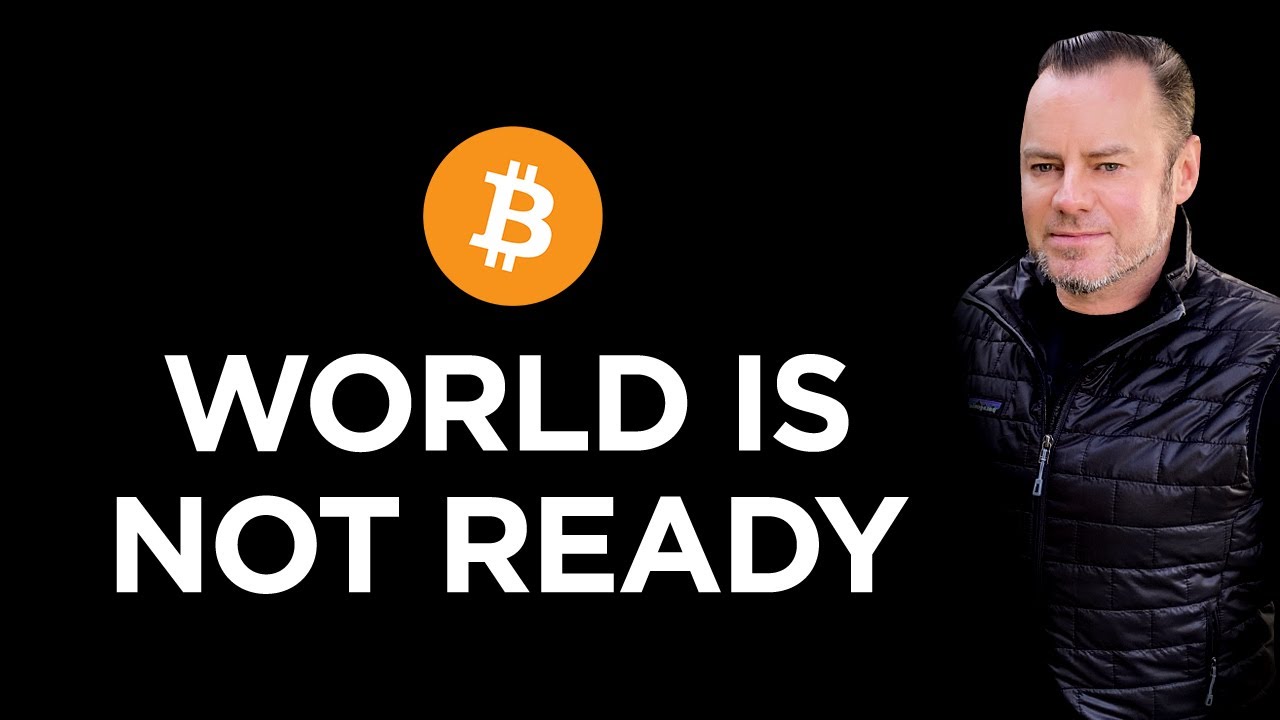M2 Money Supply Explosion: Why Stocks, Gold, Bitcoin Are Soaring
Summary
TLDRIn this video, the speaker discusses the current state of the stock market, Bitcoin, and gold, attributing their rise to a record-high money supply and ongoing monetary expansion. They explain how the Federal Reserve's actions, such as quantitative easing and rate cuts, contribute to asset inflation. Despite an economy showing signs of weakness, the stock market continues to rise due to more money being printed. The speaker emphasizes the importance of understanding the M2 money supply and advocates buying the dip when asset prices fall, as more money printing will likely lead to higher asset valuations in the future.
Takeaways
- 😀 The stock market has recovered due to an expanding money supply, which has driven asset prices higher.
- 😀 Bitcoin's rise above $100,000 and gold's near-record highs are both linked to the ongoing money printing cycle.
- 😀 Holding cash for extended periods is dangerous in the current environment, as inflation erodes its value.
- 😀 The Federal Reserve is actively expanding the money supply by increasing liquidity, which is fueling asset inflation.
- 😀 M2 money supply includes cash, checking accounts, savings accounts, and small-time deposits, and its expansion leads to higher asset prices.
- 😀 Money printing by the Federal Reserve is pushing more money into financial assets rather than the real economy, creating inflation in asset prices.
- 😀 The current monetary cycle is unlikely to stop soon; even during market corrections, money printing will continue to inflate asset values.
- 😀 Interest rate cuts, if they happen, will likely amplify the effects of the expanding money supply, causing market rallies.
- 😀 The Federal Reserve's reluctance to cut rates has led to expectations that a rate cut may happen by September 2025, which could further weaken the U.S. dollar.
- 😀 The increasing money supply and rate cuts are undermining confidence in the U.S. dollar as the world’s reserve currency.
- 😀 A recommended investment strategy is to 'buy the dip' during market corrections, as money printing will keep pushing financial assets higher over time.
Q & A
Why has the stock market and Bitcoin been performing well despite the weakening economy?
-The stock market, Bitcoin, and gold have been performing well due to the expansion of the money supply, which has been reaching new record highs. This is a result of money printing by central banks, driving asset prices up.
Why is holding cash for an extended period considered dangerous?
-Holding cash for a long period is considered dangerous because the increasing money supply leads to inflation. The value of cash declines over time as more money is injected into the economy, making financial assets more attractive.
What is the significance of Warren Buffett holding cash during economic uncertainty?
-While Warren Buffett holds cash, it’s important to understand that he has access to opportunities that ordinary people don’t, such as purchasing billion-dollar businesses. The advice to hold cash doesn't apply to everyone, especially in the face of ongoing money printing and inflation.
What is the likely impact of a deep recession according to the script?
-In a deep recession, the response will likely be an even greater expansion of the money supply, which could lead to skyrocket prices in financial assets, eventually converting into consumer price inflation. This could exacerbate the economic situation.
What does the M2 money supply represent and why is it important?
-The M2 money supply represents the total amount of liquid cash circulating in the economy, including cash, checking account balances, savings, and small-time deposits. It’s important because it reflects the level of liquidity available in the system, influencing asset prices and inflation.
How does the Federal Reserve increase the money supply?
-The Federal Reserve increases the money supply by purchasing government bonds, which gives banks more cash. These banks then lend the money to people and businesses, effectively increasing the money circulating in the economy.
What does 'money is loaned into existence' mean?
-The phrase means that when banks issue loans, new money is effectively created in the system. Although the money is borrowed, it counts as part of the circulating money supply.
What does 'quantitative easing' mean, and why is it important?
-Quantitative easing is when the Federal Reserve buys assets like government bonds to inject more money into the economy. It's important because it boosts liquidity, encouraging more spending and investment, which in turn raises asset prices.
How does easing the SLR rule help the banking system?
-Easing the SLR (Supplementary Leverage Ratio) rule allows banks to hold fewer capital reserves against their assets, which incentivizes them to buy more treasuries. This is seen as a sign of desperation because the government needs to find buyers for its increasing debt.
What impact does an expanding money supply have on asset prices?
-An expanding money supply typically supports higher asset prices by increasing liquidity. However, not all of the money flows into the real economy; a significant portion can end up in financial assets, pushing their prices up, even if consumer inflation appears subdued.
Why is the expansion of the money supply likely to result in higher asset prices?
-The expansion of the money supply leads to increased liquidity in the financial system, which makes more money available to invest in assets like stocks and bonds. As a result, these assets become more expensive, and their prices rise.
What should investors do when asset prices fall according to the script?
-When asset prices fall, investors are encouraged to buy the dip. Since the Federal Reserve will likely respond by printing more money to stimulate the economy, asset prices are expected to recover and continue rising.
What is the potential impact of the Federal Reserve cutting interest rates?
-Cutting interest rates in a context of expanding money supply can amplify market rallies. This is because lower interest rates make borrowing cheaper, boosting liquidity and encouraging higher investment in financial assets, leading to explosive market growth.
How does the US dollar's weakness relate to the current monetary policy?
-The US dollar’s weakness is a result of the combination of money printing and interest rate cuts. As more money is created and the Fed eases monetary policy, the purchasing power of the dollar declines, undermining confidence in its value.
Why is the author buying gold despite the rising stock market?
-The author is buying gold as a hedge against the weakening US dollar, which is caused by the increasing money supply and the associated inflation. Gold is seen as a store of value that can protect against the erosion of purchasing power.
Outlines

This section is available to paid users only. Please upgrade to access this part.
Upgrade NowMindmap

This section is available to paid users only. Please upgrade to access this part.
Upgrade NowKeywords

This section is available to paid users only. Please upgrade to access this part.
Upgrade NowHighlights

This section is available to paid users only. Please upgrade to access this part.
Upgrade NowTranscripts

This section is available to paid users only. Please upgrade to access this part.
Upgrade NowBrowse More Related Video

The Hidden Crisis Behind Gold’s Surge | Paper Gold Collapse?

The World is NOT Ready & Beware Bitcoin Trap

Andy on ETH | Pepe's closest friend & why 5 billion market cap can happen soon

Please Don’t Be Dumb Money…

البيتكوين في وضعية الاختراق

Bitcoin: The Flushout Is Going To Happen Any Day. Gareth Soloway
5.0 / 5 (0 votes)